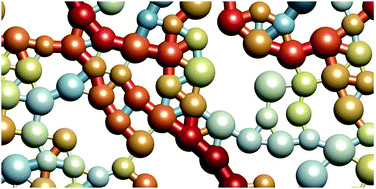Viscosity of cohesive granular flows†
Abstract
Cohesive granular materials such as wet sand, snow, and powders can flow like a viscous liquid. However, the elementary mechanisms of momentum transport in such athermal particulate fluids are elusive. As a result, existing models for cohesive granular viscosity remain phenomenological and debated. Here we use discrete element simulations of plane shear flows to measure the viscosity of cohesive granular materials, while tuning the intensity of inter-particle adhesion. We establish that two adhesion-related, dimensionless numbers control their viscosity. These numbers compare the force and energy required to break a bond to the characteristic stress and kinetic energy in the flow. This progresses the commonly accepted view that only one dimensionless number could control the effect of adhesion. The resulting scaling law captures strong, non-Newtonian variations in viscosity, unifying several existing viscosity models. We then directly link these variations in viscosity to adhesion-induced modifications in the flow micro-structure and contact network. This analysis reveals the existence of two modes of momentum transport, involving either grain micro-acceleration or balanced contact forces, and shows that adhesion only affects the latter. This advances our understanding of rheological models for granular materials and other soft materials such as emulsions and suspensions, which may also involve inter-particle adhesive forces.



 Please wait while we load your content...
Please wait while we load your content...